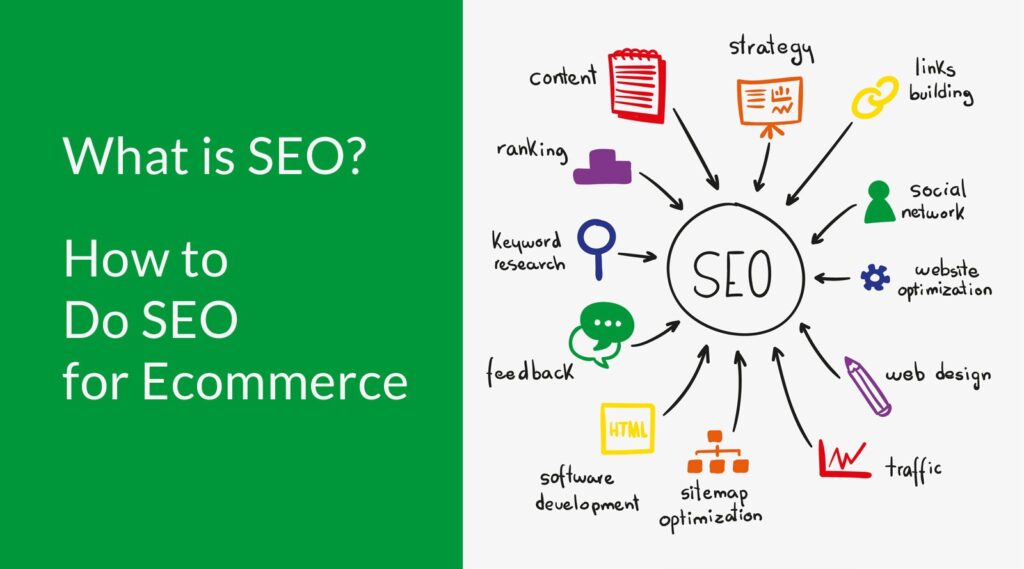
In today’s digital world, the majority of internet users browse via their smartphones and tablets. In fact, Google’s shift to mobile-first indexing has made it clear: the mobile version of your website is now the primary factor for ranking. This means that optimizing your site for mobile is no longer optional—it’s a necessity.
Mobile-first SEO is all about ensuring that your website provides an excellent experience for mobile users while simultaneously improving your Search Engine Results Pages (SERPs) rankings. In this article, we will dive into the key mobile-first SEO techniques that are essential for improving user experience (UX) and ensuring your website ranks higher in search results in 2025.
Let’s explore how you can optimize your website for mobile devices and reap the benefits of higher engagement, improved SERPs, and better user retention.
Why Mobile-First SEO Matters in 2025
As of 2025, mobile-first indexing is the default for Google, meaning that the mobile version of your website is what Google primarily uses to rank your pages. Since Google considers mobile usability as one of its top ranking factors, having a mobile-optimized website is a critical part of SEO success.
Here are some reasons why mobile-first SEO is essential for your website’s success in 2025:
- Mobile Traffic Dominance: Over 50% of all internet traffic comes from mobile devices. If your website isn’t optimized for mobile, you’re likely losing a significant amount of potential traffic.
- Better User Experience: Mobile users expect fast loading times, easy navigation, and a seamless browsing experience. Providing a positive UX is essential to keeping visitors on your site longer, reducing bounce rates, and increasing conversions.
- Improved SERPs Rankings: Mobile optimization directly impacts search rankings. Google prioritizes websites that offer excellent mobile experiences, rewarding them with better visibility in search results.
Key Mobile-First SEO Techniques to Optimize Your Site for 2025
Now that we understand why mobile-first SEO is important, let’s dive into the techniques that will help you optimize your website for mobile devices.
1. Responsive Web Design for Seamless Mobile Experiences
A responsive design ensures your website adapts to all screen sizes, from desktops to tablets to smartphones. Google recommends responsive web design as the best approach for mobile optimization. A responsive site adjusts its layout automatically based on the user’s screen size and orientation, providing a smooth browsing experience.
- Mobile-Friendly Layouts: Your content should adjust fluidly to fit any device. Avoid using fixed-width layouts or content that doesn’t resize automatically.
- Mobile-Friendly Navigation: Simplify navigation for smaller screens. Use drop-down menus, hamburger menus, or other mobile-optimized solutions to ensure users can easily find what they’re looking for.
2. Optimize Page Load Speed for Mobile Devices
Page load speed is critical to both UX and SEO. Users expect fast-loading pages, and Google takes page load speed into account when ranking sites.
- Compress Images: Large images can significantly slow down your site. Use image compression tools like TinyPNG to reduce the file size without losing quality.
- Leverage Browser Caching: This allows users to store certain parts of your site in their browsers, improving the load time for subsequent visits.
- Minimize JavaScript and CSS Files: Clean up unnecessary code by minifying your files. This reduces the size of your site’s assets and speeds up loading times.
- AMP (Accelerated Mobile Pages): For sites with a lot of content, consider implementing AMP to create lightning-fast mobile versions of your pages.
3. Mobile-Friendly Content Optimization
Content on mobile websites should be optimized not only for readability but also for user engagement. Mobile users are typically looking for quick, easily digestible information.
- Shorter Paragraphs: Mobile screens are smaller, so avoid large blocks of text. Break up your content into smaller, scannable paragraphs to improve readability.
- Optimized Headings: Use clear and concise headings (H1, H2, H3) to structure your content. This helps users and search engines understand your content quickly.
- Use of Bullets and Lists: Bullet points and numbered lists make it easy for users to skim through content, a key factor for mobile users who want quick answers.
4. Implement Mobile-First Structured Data and Schema Markup
Structured data helps search engines understand the context of your content. When it comes to mobile SEO, schema markup is critical for improving the visibility of your site in search results.
- Mobile-Specific Schema: Ensure you are using schema markup for mobile-friendly content, such as mobile app ratings, location data, and mobile-optimized reviews.
- Local SEO Optimization: For mobile users looking for local results, it’s essential to implement local schema to improve your site’s visibility in mobile local searches.
5. Ensure Click-to-Call and Mobile-Friendly CTAs

Mobile users often need quick access to your business, whether it’s calling you, purchasing a product, or filling out a contact form. Make sure your calls to action (CTAs) are optimized for mobile users.
- Clickable Phone Numbers: Ensure that phone numbers are clickable, enabling users to call directly with a tap. This is especially important for businesses that rely on phone inquiries.
- Large, Tappable Buttons: Make sure your CTA buttons are large enough for easy tapping on smaller screens. Avoid using small, hard-to-click buttons, which can be frustrating for users.
6. Optimize for Mobile-First Backlink Building
Backlink building remains an essential off-page SEO strategy, but mobile-first SEO requires a few tweaks to this traditional technique.
- Focus on Mobile-Friendly Websites: When building backlinks, prioritize sites that are also mobile-friendly. Google values backlinks from sites that offer excellent mobile experiences.
- Ensure Mobile Usability of Referring Pages: Links from mobile-optimized pages can pass more value to your site, improving your own mobile rankings.
7. EEAT: Enhance User Trust and Authority
In 2025, Google’s EEAT (Experience, Expertise, Authoritativeness, Trustworthiness) is more important than ever. Demonstrating these factors will improve your site’s mobile SEO as well as your overall rankings.
- Expert Content: Make sure your content is written by experts or authoritative sources. Google rewards content that demonstrates expertise and trustworthiness.
- Cite Authoritative Sources: Use authoritative references to back up your claims. This builds authoritativeness and trustworthiness in the eyes of both Google and your users.
- User Reviews and Ratings: Encourage user-generated content, such as reviews, which helps establish trustworthiness and enhances local SEO efforts.
Outdated Mobile SEO Techniques to Avoid
While some older SEO strategies still hold value, others have become obsolete as mobile-first indexing and other changes have evolved the SEO landscape.
- Flash-Based Content: Flash content is no longer supported on mobile devices. Ensure your website is free of any Flash elements.
- Fixed-Width Layouts: Avoid fixed-width designs that don’t adjust to different screen sizes. Stick to responsive layouts for flexibility.
- Pop-Ups and Interstitials: Overly intrusive pop-ups or interstitials that are hard to close on mobile devices can harm your user experience and rankings. Avoid these practices.
Summary and Actionable Checklist
Mobile-first SEO is no longer a trend—it’s the future of web optimization. By focusing on improving mobile site speed, content optimization, and UX, you can boost your mobile rankings and improve overall user engagement. Here’s a checklist to help you implement mobile-first SEO techniques:
- Implement responsive web design for seamless mobile experiences.
- Optimize page load speed by compressing images and minifying code.
- Improve mobile content by using shorter paragraphs and clear headings.
- Use schema markup to enhance content visibility in mobile search results.
- Ensure mobile-friendly CTAs with large, tappable buttons and clickable phone numbers.
- Focus on backlink building from mobile-friendly, authoritative websites.
- Prioritize EEAT by providing expert, authoritative content and collecting user reviews.
By implementing these techniques, you’ll improve both UX and SEO in 2025, ensuring that your site ranks well and provides a seamless experience for mobile users.
releated:What Impact Does Cloud Hosting Have on Your SEO Strategy?
Meta Description (150-160 words)
In 2025, mobile-first SEO is essential for improving user experience (UX) and SERPs rankings. Learn key techniques to optimize your website for mobile, including responsive design, faster load times, content optimization, and EEAT (Experience, Expertise, Authoritativeness, Trustworthiness). This article provides actionable strategies to boost mobile SEO and stay ahead in an increasingly mobile-driven digital landscape.
4o





